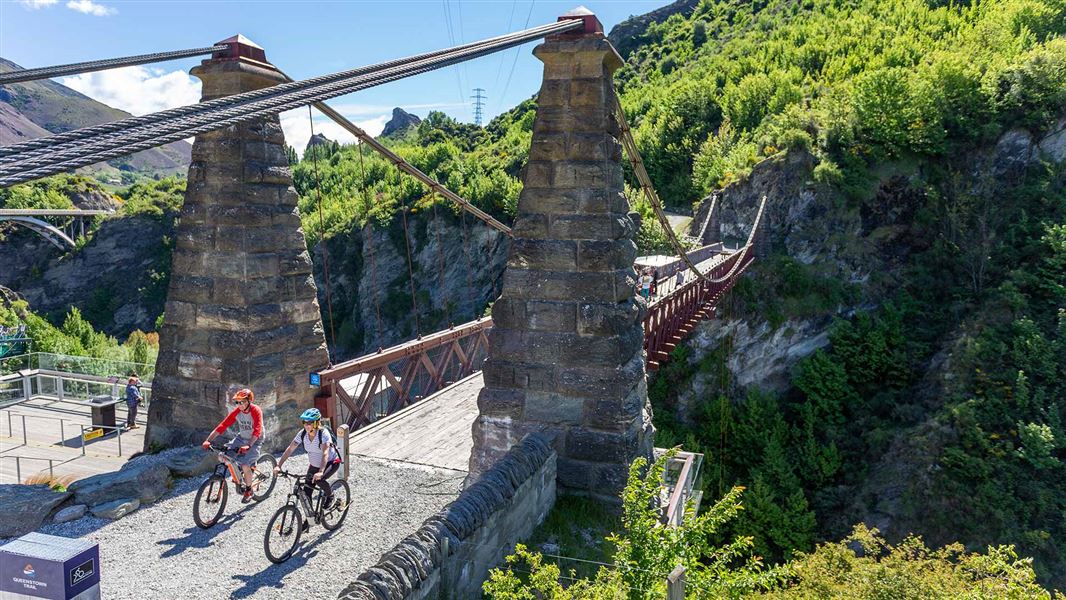The world birthplace of bungy: where people leap from the equivalent of a 10-storey building held-safe by a giant elastic band.
It is also where an innovative suspension bridge enabled safe crossing of the notoriously-windy canyon. As a result, engineer Harry Higginson won a world’s top engineering award for his work in 1882.

Tohu Whenua are the places that have shaped Aotearoa New Zealand. Located in stunning landscapes and rich with stories, they offer some of our best heritage experiences.
Image gallery
Two leaps of faith took place here: this is the birthplace of bungy tourism, where people every day leap from the equivalent of a 10-storey building held-safe by just a giant elastic band around their ankles. It is also here in 1880 that a daring new bridge design was introduced.
The challenge for engineer Harry Higginson was a sheer rocky gorge that funnelled destructive side winds. Higginson was aware that in other countries several near-new bridges had been destroyed by high winds.
To meet this challenge, he combined a range of innovative strengthening solutions, such as inward sloping cables, to come up with a suspension bridge that was 42 m high with a 120m long span. The design proved economical and enduring.
The work won a world’s top engineering award, a Telford Premium, in 1882. In 1963 a new bridge opened and the 1880 bridge was retained for its historic value.
In 1988 A. J. Hackett began the world’s first commercial bungy jumping venture here and this has grown into an international attraction. The bridge and surrounding site featured in the Lord of the Rings films and is on the Queenstown Trail Arrow River Bridges cycle route.
The gold rush
The discovery of gold in 1861 transformed New Zealand. The resulting economic growth inspired construction of this bridge to improve road access to the Otago goldfields.
The initial gold rush attracted fortune-seeking miners. They combed rugged landscapes on foot armed with simple gold pans. During this heady first decade some lucky miners made fortunes collecting the easily won gold from the surface of the ground.
However, most of the gold lay deeper and required heavy machinery to recover. Mining companies were formed to raise capital and this created the first New Zealand stock exchanges.
The early miners’ tracks were no longer adequate to bring in the heavy equipment: Railways, roads and bridges were needed.
A bridge for Nevis Bluff
In 1869 the railway reached the lake at Kingston and shipping enabled a link to Queenstown. Gold wealth enabled the County Council to make road making a priority. To reach further inland a road had to be chipped out of the rugged Kawarau Gorge.
Nevis Bluff: provided a real challenge with a 42 m high and 120 m long span. The solution was to build a suspension bridge.
At times wind gales blasted this site. New Zealand engineers were aware that overseas, some near-new bridges had been destroyed by high winds. Engineer Harry Higginson was up for this challenge and combined a range of innovative strengthening solutions like inward sloping cables.
Related links
- Kawarau Gorge Suspension Bridge - Engineering New Zealand
- Gibbston River Trail - ride past the bridge on this trail
